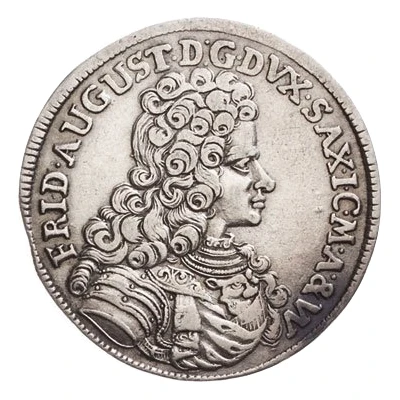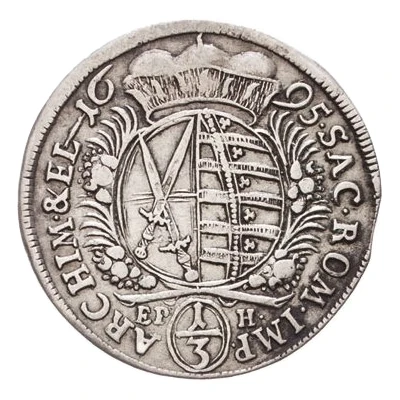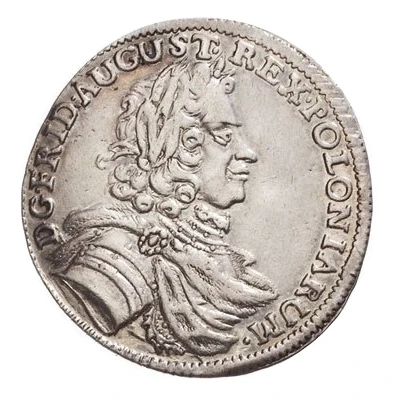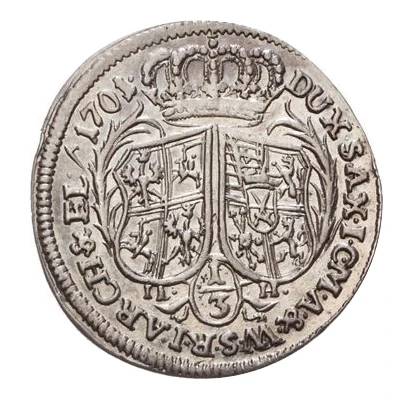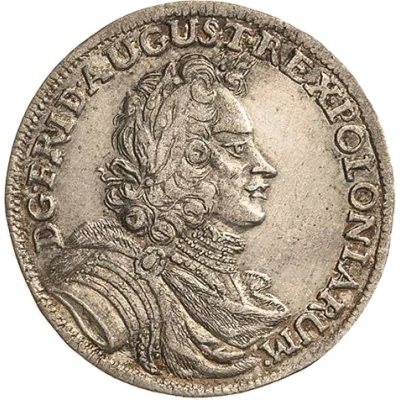
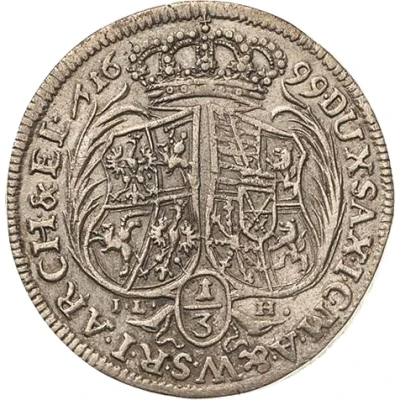

© Leipziger Münzhandlung und Auktion Manfred Höhn
⅓ Thaler - Frederick August I
| Silver | - | - |
| Issuer | Electorate of Saxony (Albertinian Line) (German States) |
|---|---|
| Issuer | Electorate of Saxony (Albertinian Line) (German States) |
| Prince elector | Frederick Augustus I (Friedrich August I) (1694-1733) |
| Prince elector | Frederick Augustus I (Friedrich August I) (1694-1733) |
| Type | Standard circulation coin |
| Type | Standard circulation coin |
| Years | 1698-1700 |
| Years | 1698-1700 |
| Value | ⅓ Thaler |
| Value | ⅓ Thaler |
| Currency | Thaler (1493-1805) |
| Currency | Thaler (1493-1805) |
| Composition | Silver |
| Composition | Silver |
| Shape | Round |
| Shape | Round |
| Demonetized | Yes |
| Demonetized | Yes |
| Updated | 2024-10-05 |
| Numista | N#188665 |
|---|---|
| Rarity index | 100% |
Reverse
Crowned 2 adjacent shields of arms, palm branches to sides.
Script: Latin
Interesting fact
One interesting fact about the ⅓ Thaler coin from the Electorate of Saxony (Albertinian Line) is that it was minted during a time of great economic and political change in Europe. The coin was issued during the reign of Frederick August I, who was the Elector of Saxony from 1694 to 1733. During his reign, the Electorate of Saxony was facing significant economic challenges, including a large national debt and a decline in the value of the local currency. To address these issues, Frederick August I introduced a new currency, the "Thaler," which was divided into smaller denominations, including the ⅓ Thaler coin. This coin was made of silver and was used widely in trade and commerce throughout the German States. Despite the economic challenges of the time, the ⅓ Thaler coin remains a valuable and sought-after collector's item today.
